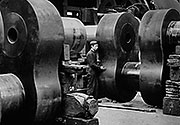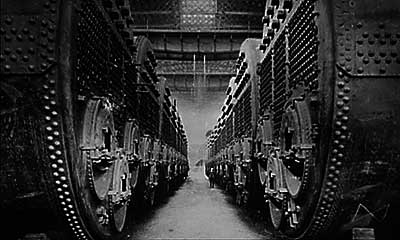FITTING OUT
THE ENGINES
The Titanic was the largest object ever built by man at the time and required huge engines to move her forward. Harland & Wolff weren’t experienced in the turbine engines used by their rivals, Cunard. So the design team opted instead for two triple-expansion (reciprocating) steam engines, which powered the huge port and starboard propellers, and a smaller turbine engine to drive the forward-only central propeller.
THE BOILERS
Twenty-nine boilers fed by 159 furnaces were required to power the engines. They burnt over 600 tons (544 tonnes) of coal a day, pumping 30,000 horsepower to the engines and were capable of producing a top speed of about 23 knots.
PROPELLERS
The propellers were connected to the engines by huge shafts. Each of the outer propellers measured four times the height of a man, 23 feet (7m), in diameter and weighed about 38 tons (34.5 tonnes) while the central propeller weighed in at 22 tons (20 tonnes). And each was cast in bronze.



